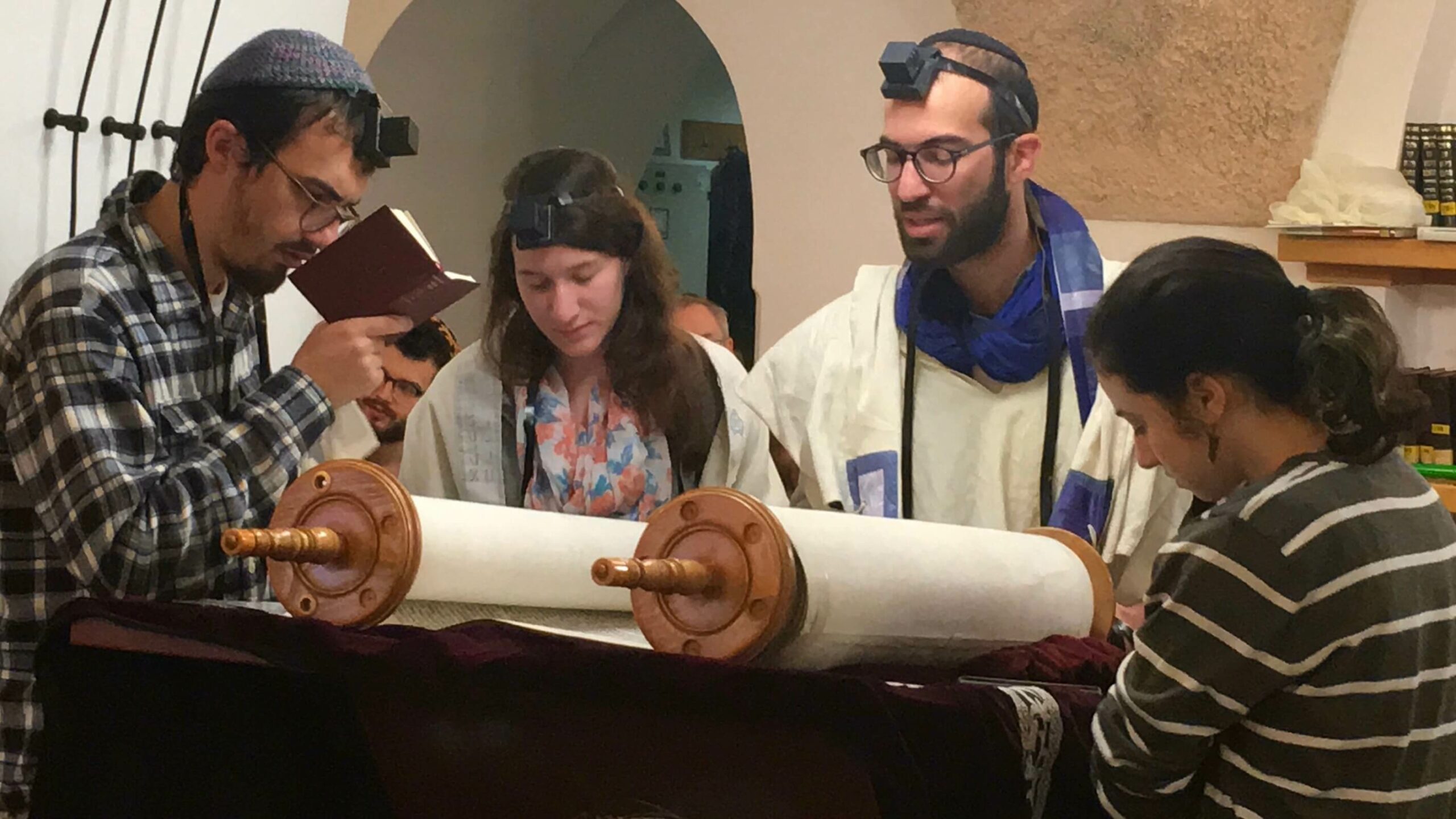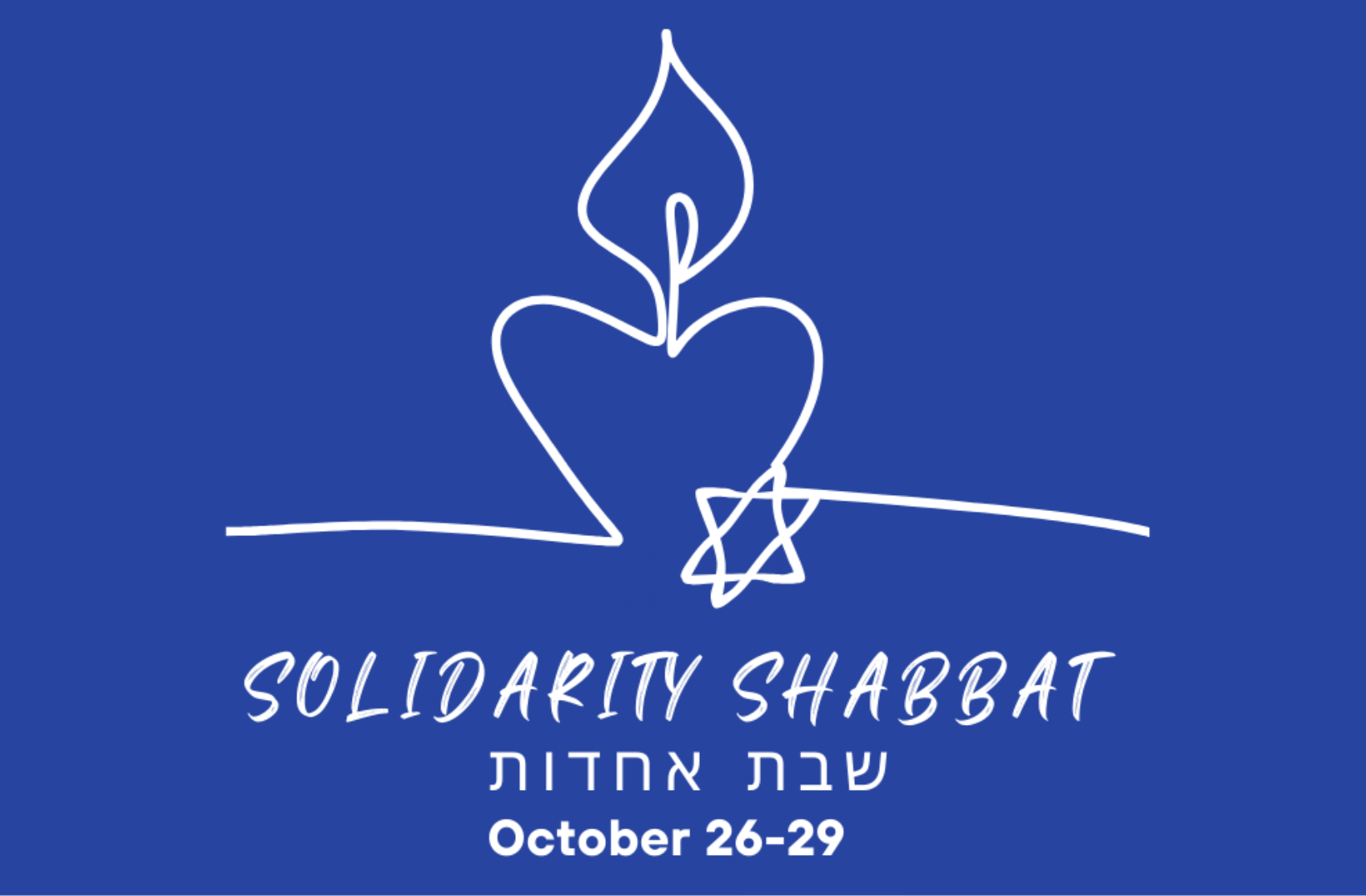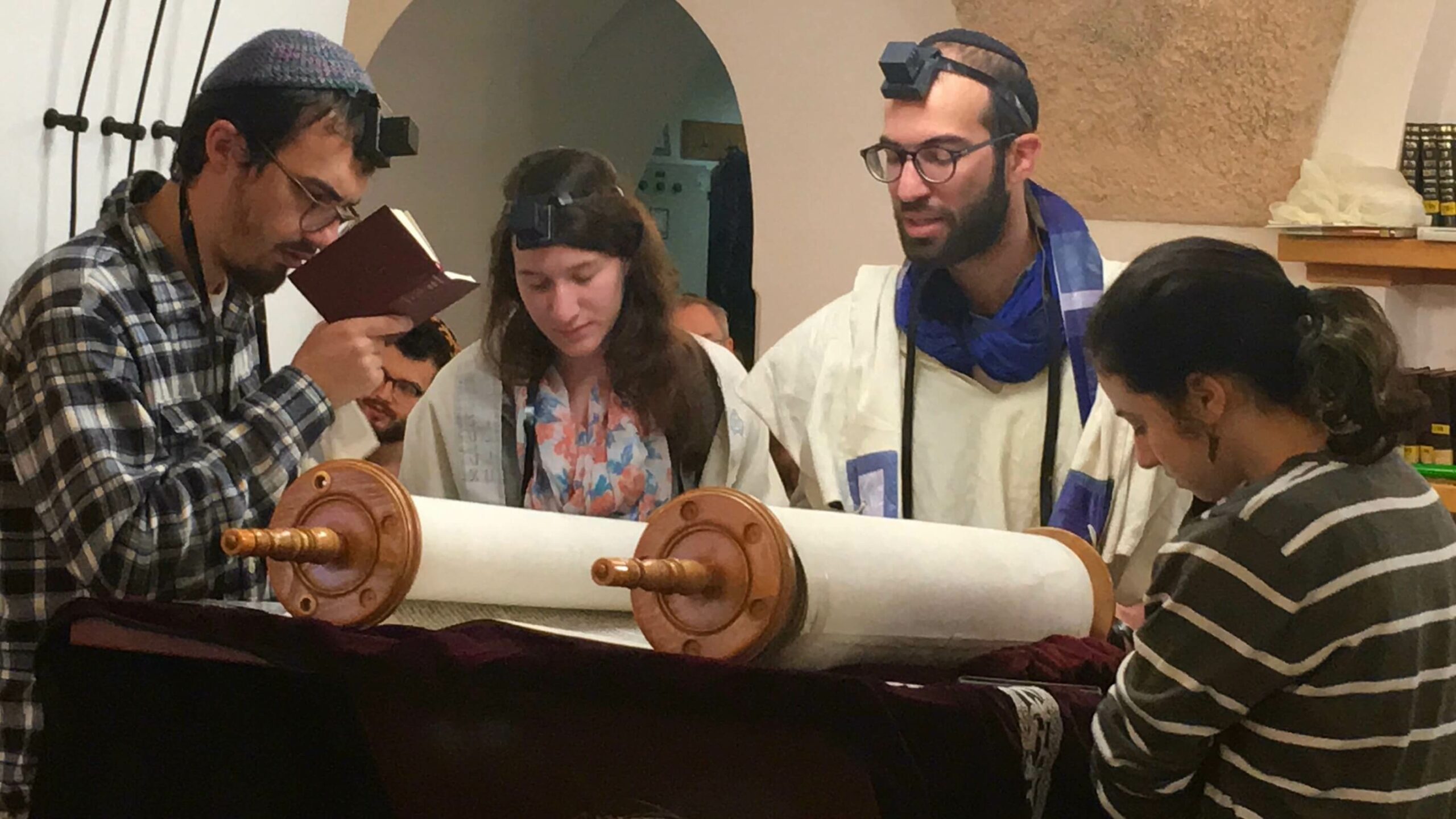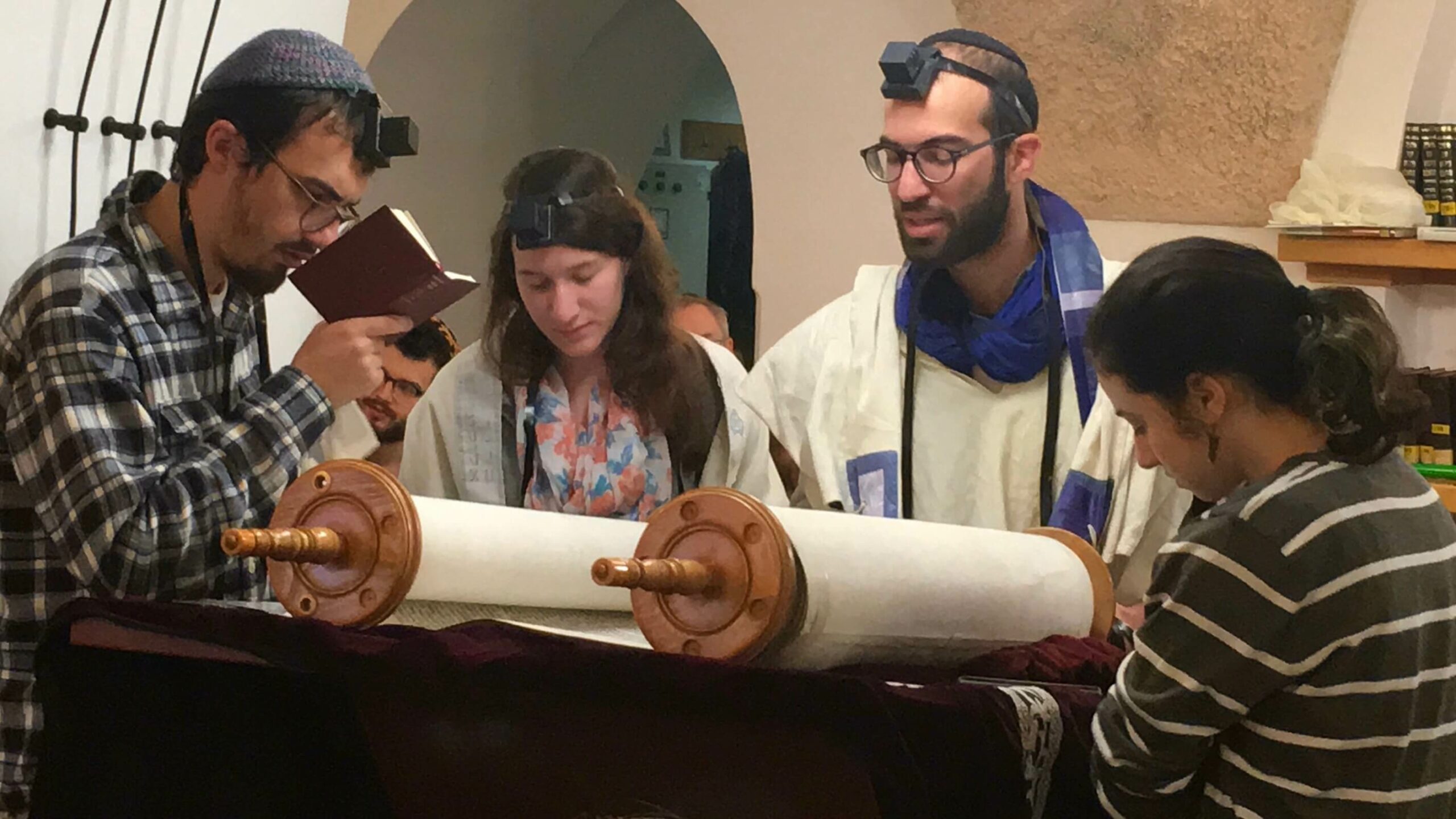
TORAH SPARKS (Print friendly version)
Parashat Naso
May 26, 2018 | 12 Sivan 5778
Annual | Numbers 4:21-7:89 (Etz Hayim p. 791-811; Hertz p. 586-601)
Triennial | Numbers 5:11-6:27 (Etz Hayim p. 796-805; Hertz p. 589-596)
Haftarah | Judges 13:2-25 (Etz Hayim p. 812-815; Hertz p. 602-604)
D’var Torah: The Un-Blessed
Rabbi Shoshana Cohen, Conservative Yeshiva Faculty
In this week’s parasha, we learn about two additional powers/responsibilities of the kohanim (priests) – one a curse and one a blessing. Verses 5:11-31 tell us of the sota – a woman whose husband suspects her of adultery. She goes before the kohen, who makes her drink a potion that literally contains the words: “May the LORD make you a curse and an imprecation among your people…” But further on, in verses 6:22-27, we get Birkat Kohanim, the Priestly Blessing: “Thus shall you bless the people of Israel. Say to them: ‘The LORD bless you and protect you! The LORD deal kindly and graciously with you! The LORD bestow His favor upon you and grant you peace!’” As a bat kohen, the daughter of a modern-day descendant of Aaron, this juxtaposition is doubly meaningful, as what was a source of pride for my father was for me a source of pain.
From the age of two I sat next to my father in the men’s section of our orthodox minyan, first in Silver Spring, MD and then on the West Side of Los Angeles. I followed along with the Shema, tracing with my finger the Hebrew letters my father taught me to read, well before I had learned to read English. Drawn to the language, and savoring those precious moments with my learned father, my connection with Torah deepened. By the age of eight I learned to chant Torah trope and read Rashi on the parasha.
Until the age of nine or so I continued to sit in the men’s section, participating in what was “really going on” at shul. But there were two moments when I would get a glimpse of what was coming as an Orthodox woman. The first was at age five, when my male friends, having just learned to read Hebrew, got up and led the congregation in Anim Zemirot. And the second was Birkat Kohanim, when my brothers and my father would remove their shoes and go up to bless the congregation.
In late-80’s / early-90’s Modern Orthodoxy, there were no roles for girls or women in public rituals, even in our relatively liberal shul. But my parents had made a choice, despite their progressive leanings, to remain part of an Orthodox synagogue so as to have a Shabbat observing community and the kind of social and religious life that comes with it. The world has changed since then, and my own religious path led me eventually toward egalitarianism and Conservative Judaism. Over the years I have served as shelichat tzibur (prayer leader) – first for Kabbalat Shabbat, then Ma’ariv, and ultimately Shacharit and Musaf. There is still a part of me that is uncomfortable, but in many ways I have healed the wound of Anim Zemirot.
Birkat Kohanim is a different story. I have not been able to let go of the feeling I had when my father and little brothers went up to bless the congregation and I played with their shoes. It was a club that wouldn’t have me as a member, and I don’t want to belong. Egalitarian congregations vary in how they handle a bat kohen and Birkat Kohanim. Some say that she is not permitted because as a continuation of a Temple ritual, the blessing should be performed only by those who were authentically eligible to do so in the Temple. Other congregations treat a bat kohen as a kohen in every way. And others do away with the distinction altogether.
As for me, despite pressure from my students and colleagues to do Birkat Kohanim, I have dug my heels in deeper. As with the Sota, patriarchy is too intertwined with the priesthood; the priesthood IS patriarchy. A bat kohen’s status come from her father and her few “rights” are revoked upon marriage to a non-kohen. But far more problematically, if a bat kohen has sex with someone before marriage – she gets a punishment far worse than the other daughters of Israel. She is burned. With this, rather than the priestly blessing, echoing in my head, I cannot wear my bat kohen status as an adornment and stand proud before my congregation.
Perhaps this is the unfinished corner in my own spiritual house, where I remember that in many ways the full redemption, the full release from gender oppression, has yet to come. My daughter will grow up, God willing, with me as her role model of a fully educated and active Jew, and maybe she will be able to reclaim the kohen identity that has thus far remained foreign to me.
For Discussion: How should we handle Kohen status? Should the circle of privilege expand, or should privilege be ended? How do balance our contemporary values with a desire for authentic connection with the past?
Parashat Naso Self-Study
Vered Hollander-Goldfarb, Conservative Yeshiva Faculty
We are approaching the end of the material regarding the Tabernacle, holiness and purity (the “Holiness Code”) concluding with the inauguration of the Tabernacle, Chanukat Hamizbe’ach as the Torah calls it.
1) We open the parasha with the census of the Levites that are descendants of Gerson and Merari. Unlike the rest of the people, who were counted from the age of 20, the Levites are counted if they are 30-50 years old (4:21-23, 29-30). What might be the reason for the difference?
2) Under certain circumstances, people who are impure have to be sent away from the camp (5:1-4). What are these circumstances? Why do you think that this Mitzvah is addressed to the people of Israel, not to Moshe?
3) A person who chooses to become a Nazirite may not eat or drink any product of grapes (6:1-4). What might this restriction suggest about the state of mind of the person who chose to take a Nazarite oath?
4) Aaron and his sons (the Kohanim) are told how to bless the people (6:22-26). This is the Birkat Kohanim (Priestly Blessing) that is still said today. When is it said? Try to think of other times when this text is used, not necessarily by a Kohen. Why do you think that it was chosen for those occasions?
5) The parasha ends with the listing of the gifts given by each of the leaders of the tribes to the Mishkan (Tabernacle) when it was inaugurated (7:11-83). What part of the gifts were permanent, and which would have to be replaced at some point? What is the benefit of each type of gift?
D’var Haftarah: The Power of Difference
Rabbi Mordechai Silverstein, Conservative Yeshiva Faculty
Parshat Naso introduces us to the vow of the Nazir, through which a person can take upon him/herself abstinence from grape products, haircutting, and ritual impurity incurred from coming into contact with the dead: all for a finite amount of time – usually a month. The intended purpose of this discipline seems to have been to heighten an individual’s sense of holiness – kedushah.
The practice also serves as the link to this week’s haftarah, where we meet Samson’s heroic mother, Eshet Manoah – the wife of Manoah, a childless woman, who is visited by a divine messenger. This angel promises her a son, provided certain conditions are met: “Now, be careful not to drink wine or other intoxicant, or to eat anything unclean… let no razor touch his head, for the boy is to be a Nazirite to God from the womb on.” (13:5)
Samson’s vow – imposed upon him from the outside rather than taken voluntarily – differs from the Nazirite vow recorded in the Torah. Though Samson’s mother was commanded to refrain from wine and hard drink, Samson does not seem to have had the same restrictions. And whereas the standard Nazirite vow is for 30 days, Samson’s was to last a lifetime.
But even were someone to make a specific vow to be a lifelong Nazirite, their status would still be different than Samson’s. The sages of the Mishnah explained: “If the hair of a lifelong Nazirite becomes too heavy he might lighten it (get a haircut) with a razor…and if he becomes ritually impure he brings the offering for ritual impurity; but a Nazirite the like of Samson, if his hair becomes too heavy he does not lighten it, and if he becomes ritually impure, he does not bring the offering for ritual impurity.” (Nazir 1:2)
This makes Samson’s life both easier and harder than a traditional Nazirite. He doesn’t have to worry about either alcohol or ritual impurity, but he can never “lighten his load.” All of this plays out in his tragi-heroic life, as he rebels against external expectations by drinking and engaging in other unsavory behaviors. The irony, of course, is that these selfsame expectations, symbolized by his uncut hair, are the source of his strength.
Surely we can identify with Samson, born as we are with identities we did not choose, but which are integral to who we are. But unlike Samson, who never quite reckons with the blessings of his identity, we can and must recognize that what makes us different makes us special, and what makes us special makes us powerful. It is a difference worth protecting.
For Discussion: What lessons from Samson’s life can we apply to our own? What can we apply to Jewish life in general?





